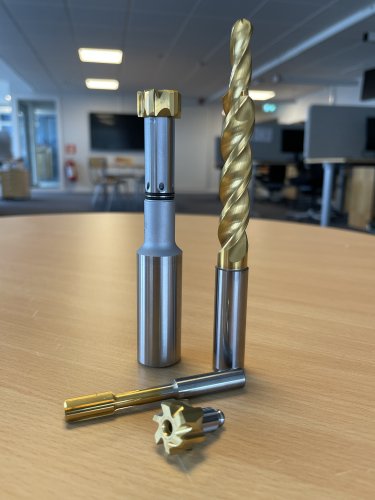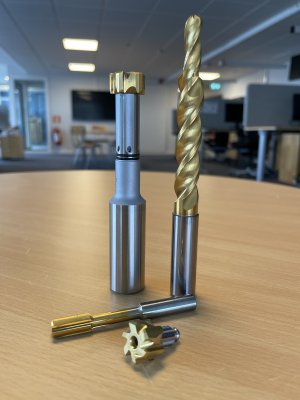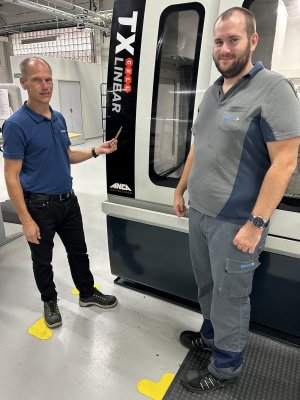A challenging project with Swedish truck manufacturer Scania brought out the best in Seco’s research and development (R&D) team, who found a way to extend the life of one tool by a factor of 20 when using it to cut a new type of cast iron for their engines.

Like the company itself, Seco customers such as Scania are always trying to find new ways to improve their products, processes and margins, often calling upon Seco’s R&D department to assist them in doing so. Based in Södertälje just south of Stockholm, Scania is a world-leading provider of transport solutions, with a strong reputation for manufacturing trucks, busses and heavy lorries, and it is also well-known around the world for the quality and reliability of its diesel engines.
The discovery of a new, lighter form of cast iron was a major breakthrough that offered the potential for lighter and more efficient engines, but first the manufacturer had a problem to solve – would their existing machines and tools be able to work on this new material, and if not, how would they manage their production process? “The background was this new form of cast iron, which offered many advantages – it is more environmentally friendly and it’s also stronger, which means that they can make the engine walls thinner and lighter,” Stefan Frejd, R&D Specialist Drilling at Seco says. “The problem that Scania wanted to explore was the fact that this material increased the wear on the production tools, which of course shortened the life of the tools. The challenge was to find a way of extending the tool life for the milling cutters, drills and reamers that would be used on this new material.”
A project group was formed, and their work paid off almost immediately. “We got together with Scania’s engineers and discussed some of the problems and the applications they used, and then we came back with some new tools to be tested. The first one drilling tool we tested turned out to have a tool life of more than 20 times the existing one, so that was a huge improvement,” Stefan explains.
Other test tools managed to outlast their predecessors by a factor of seven, which represented a huge breakthrough for both Scania and Seco. “A lot of these things come down to time – the tools last longer, which means that more time elapses between when you mount the tool and when you have to replace it. In practical terms, that means that you might mount a tool at the start of one shift and you can continue using it right through another shift before having to replace it, whereas previously you might have had to replace the tool at the start of each shift, which costs both time and money to do,” Stefan says.
“What is often overlooked is that every time we change a tool the machine has to be stopped and during that time it cannot produce anything, and time is money in manufacturing. The fact that we were able to make stronger, more durable tools also reduced the amount of breakage in production – when tools break during a shift it can often cause great disruption to the production process, and they take time to fix,” Stefan continues.
The learnings at Scania can also be implemented in a variety of other settings, Stefan says. “Every application is different, but there are always things that we discover that we can apply elsewhere. Normally you develop a tool from a stock item or a standard tool, and then you apply different criteria based on what the customer needs. In the case of Scania, they had particular requirements for roundness when reaming, for example, so you could say that their standard is in fact customized special tools.”
For Stefan and his team, the learnings and discoveries came about due to their close relationship with the customer and a strong desire to understand and find a solution to their issues. “The most important thing for us in R&D is that ability to cooperate with production engineers in different companies – as with Scania there are always problems to be solved, but when we come together, we often find that we can do so quite quickly when we work together.”
For more information, click here.
###
Seco optimized tools for high strength cast iron
Stefan Frejd and Joel Törnqvist from Seco run tests in the geometry grinding machine at Seco Norrköping Production Unit for advanced drilling tools
With its origins in Fagersta, Sweden and present in more than 75 countries, Seco is a leading global provider of metal cutting solutions for indexable milling, solid milling, turning, holemaking, threading and tooling systems. For nearly 100 years, Seco has driven excellence throughout the entire manufacturing journey, ensuring high-precision machining and high-quality output.
For the latest innovations and cutting-edge products, visit www.secotools.com.

